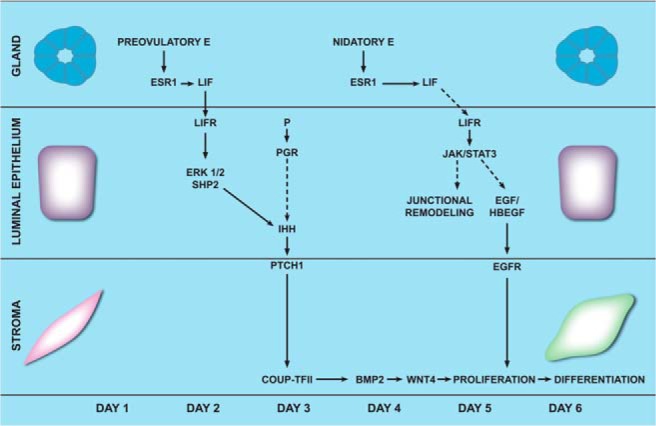Figure 8.

Schematic model of the paracrine networks acting downstream of epithelial ESR1 in the mouse uterus during implantation. In the preimplantation uterus, E contributed by the preovulatory surge at the estrous stage acts through its receptor, ESR1, to induce LIF production in the glands during days 1–3 of gestation. LIF, secreted from the glands, acts via the LIF receptors on the luminal epithelium to activate ERK signaling pathway in a synergistic fashion by acting in concert with P, which acts through its receptor PGR. The JAK-STAT3 pathway is not activated by LIF in the luminal epithelial cells at this time. Activated ERK1/2 then induces the expression of Ihh in the luminal epithelium. IHH secreted from the luminal epithelium activates the IHH-PTCH1-COUPTFII signaling cascade in the uterine stromal cells. This chain of signaling events promotes stromal proliferation and differentiation, which are key events during implantation. BMP2, bone morphogenetic protein 2; LIFR, LIF receptor. EGF, Epidermal growth factor; HBEGF, Heparin-binding EGF-like growth factor.
